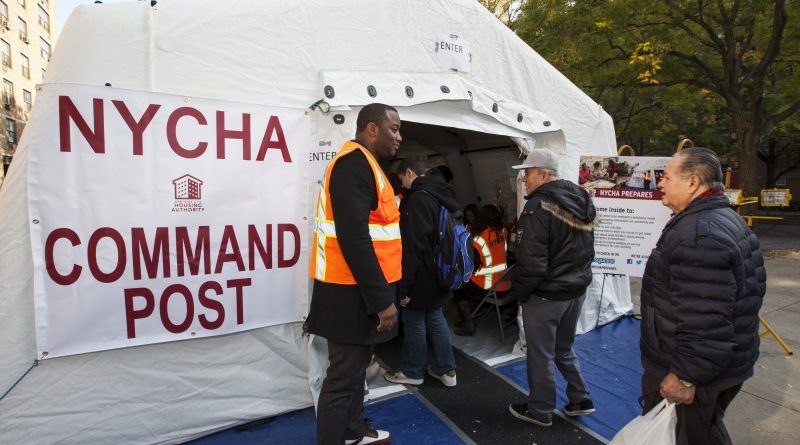Making Progress on Emergency Preparedness
After emergencies, big and small, NYCHA works to figure out how it can better respond to future incidents. Based on lessons from Superstorm Sandy, NYCHA’s Office of Emergency Preparedness—created in 2014—is now hard at work strengthening the Authority’s emergency response by developing the agency’s first-ever overall emergency plan. This comprehensive emergency plan will improve both preparation and response to emergencies to help ensure the safety and wellbeing of residents in case of another natural disaster or other catastrophe.
Since the storm, NYCHA’s Office of Emergency Preparedness has quickly proven its readiness for emergencies by successfully responding to five major emergency and security events: Ebola in New York City; Winter Storm Juno, forecasted to be an historic snowstorm; a small cluster of Legionnaires’ Disease in the South Bronx; the Pope’s visit, which was the largest security challenge in the City’s history; and Hurricane Joaquin, a Category 4 hurricane in the Caribbean that could have impacted the region.
“When tested with potentially devastating natural disasters to health emergencies like Legionella in 2015, NYCHA rose to the challenge and put our new structure and plans into action,” NYCHA’s General Manager Michael Kelly says. “We’ve shown considerable progress and plan to build on successes to enhance our preparedness, training, and communications in 2016.”
In 2015, 10 parts of the comprehensive emergency master plan were developed, including lists of residents with disabilities and those who may need special assistance during an emergency and procedures for how to handle specific hazards, maintain operations in every NYCHA department, and communicate critical information to employees, residents, and other stakeholders. These plans outline roles and responsibilities of NYCHA staff, other government agencies, and volunteer organizations during an emergency.
NYCHA has taken other steps to increase readiness: last year the Authority led or participated in more than 20 trainings and preparedness exercises with other City agencies and organizations and more than 1,100 NYCHA staff were trained on a system that enables multiple agencies to work together effectively in response to an emergency. For instance, New York City Emergency Management provided emergency preparedness training to NYCHA seniors and residents in hurricane evacuation zones and recruited volunteers to help their neighbors and communities get prepared.

